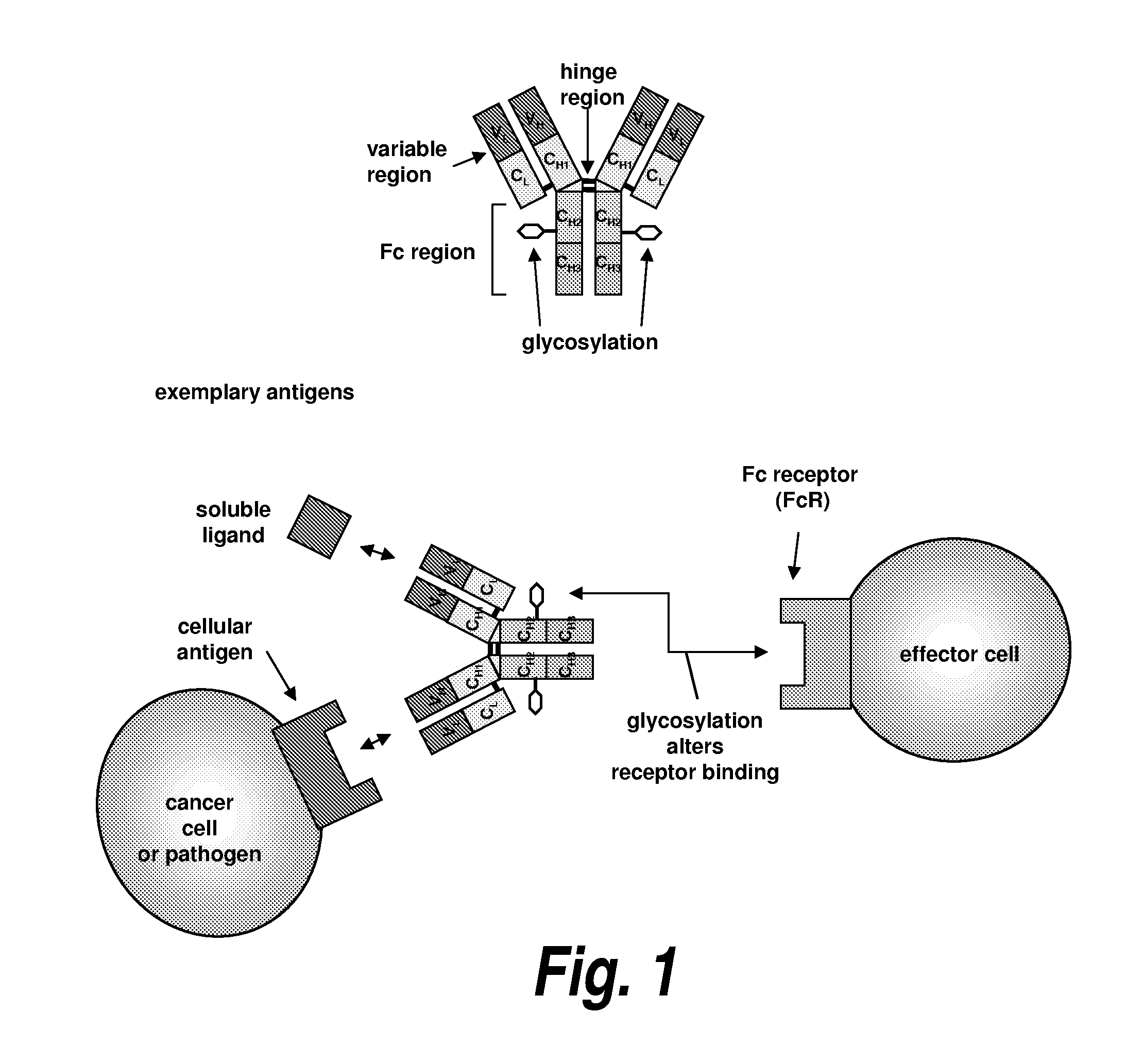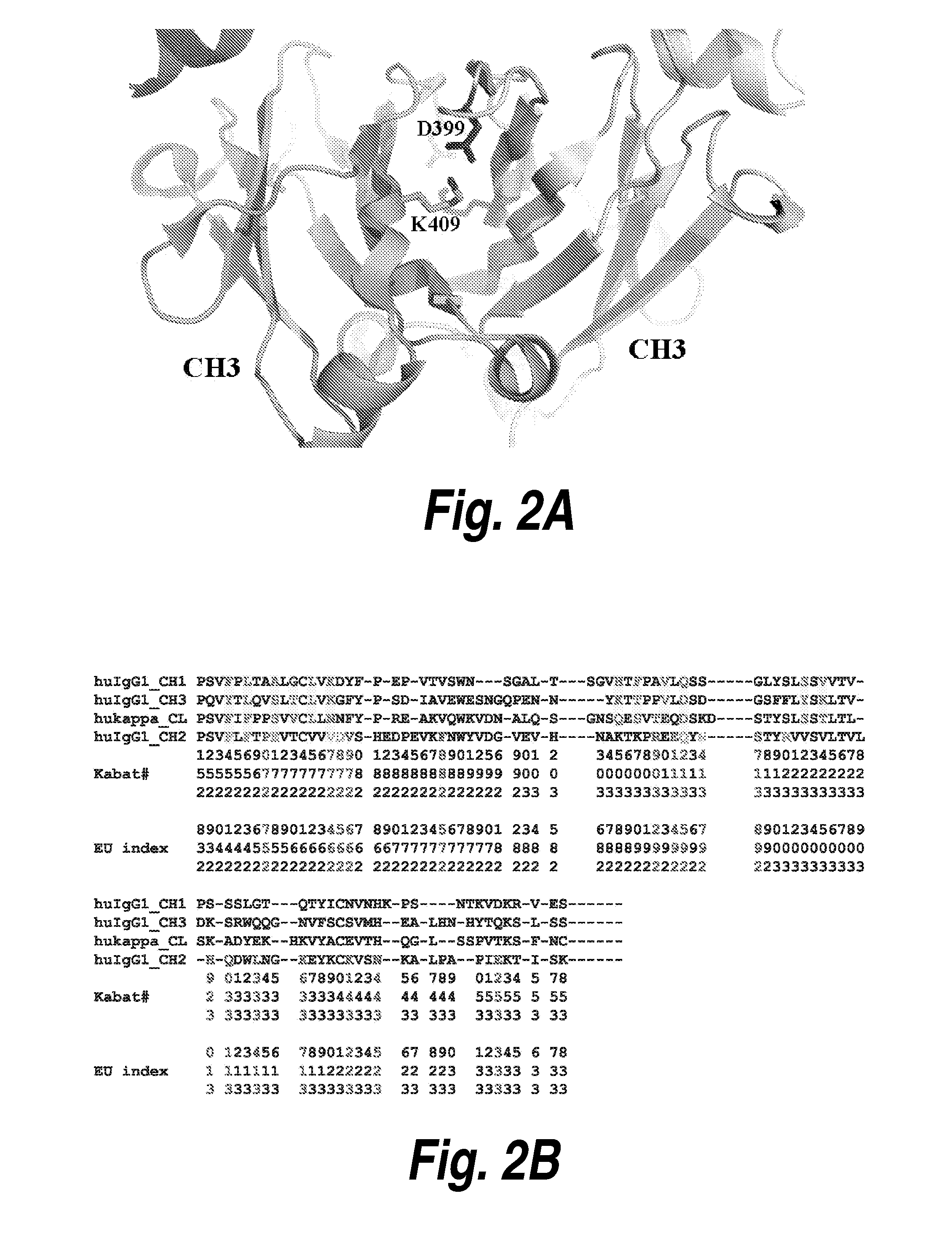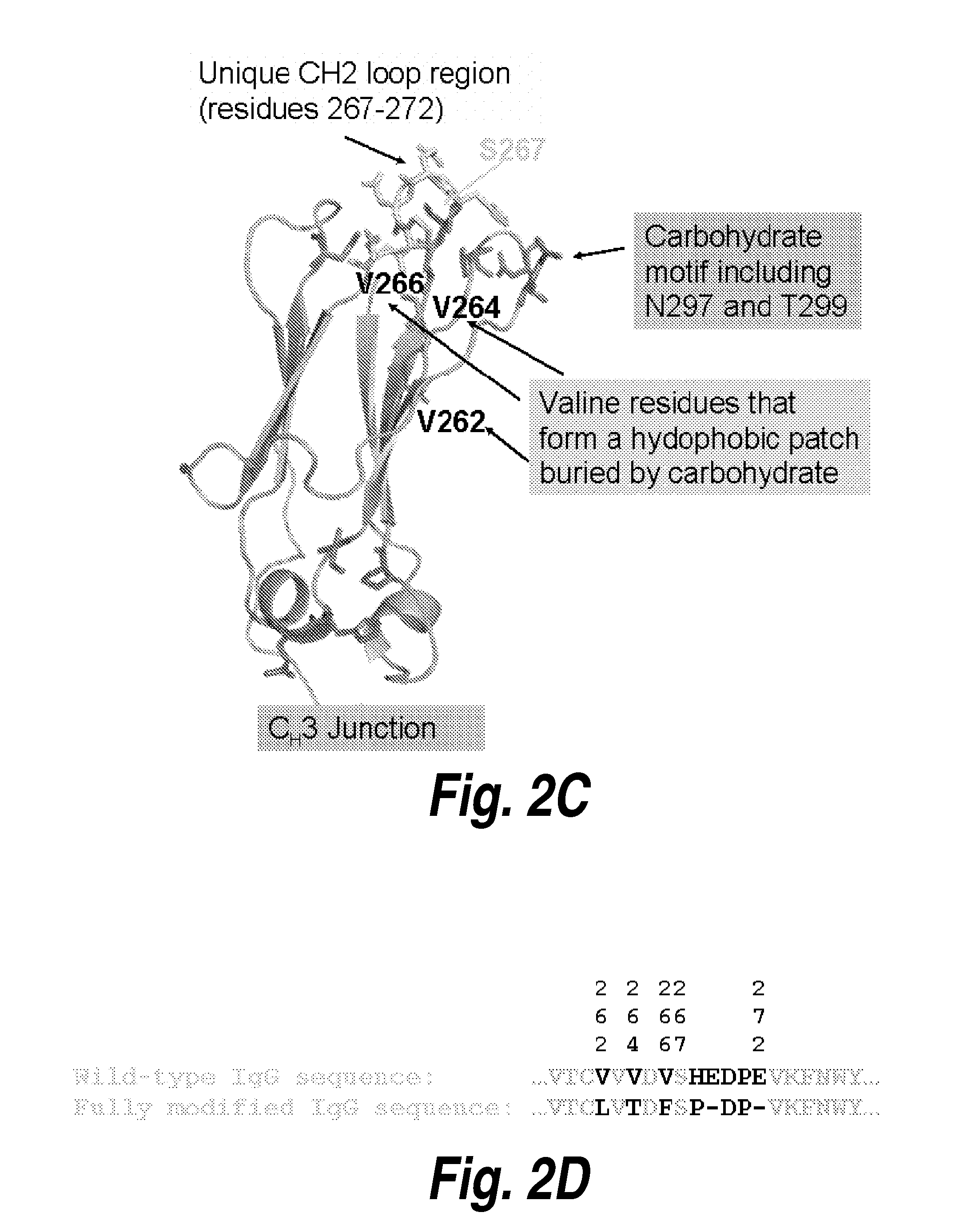Stabilized fc polypeptides with reduced effector function and methods of use
a technology of effector function and polypeptide, which is applied in the field of stabilized fc polypeptide with reduced effector function and methods of use, can solve the problems of fragments having reduced half-lives, provoking unwanted side effects, and presenting manufacturing challenges
- Summary
- Abstract
- Description
- Claims
- Application Information
AI Technical Summary
Benefits of technology
Problems solved by technology
Method used
Image
Examples
example 1
Rational Design of Gain-in-Stability IgG Fc Mutations
[0512]Aglycosylated antibodies represent an important class of therapeutic reagents where immune effector function is not desired. However, it is well established that removal of the CH2 associated oligosaccharides in IgG1 and IgG4 affects antibody conformation and stability. Loss of antibody stability can present process development challenges adversely impacting program timelines and resources. Here we detail a number of methods utilized to design a library of amino acid positions in CH2 and CH3 to generate increased stability for IgG Fc.
A. Covariation and Residue Frequency Designs for Effector-Less IgGs: IgG4 CH2 Domain
[0513]Covariation analyses with the diverse C1-class Ig-fold sequence database were performed as described previously (Glaser et al., 2007; Wang et al., 2008). Compilation and structure / HMM-based alignment of C1-class Ig-fold sequences was also performed as described previously (Glaser et al., 2007). The covariat...
example 2
Thermal Stability Screening of IgG Fc Antibody Domains Produced in E. coli
[0527]A modified thermal challenge assay described in U.S. patent application Ser. No. 11 / 725,970 was employed as a stability screen to determine the amount of soluble IgG Fc protein at 40° C. retained following a thermal challenge event at pH 4.5.
[0528]E. coli strain W3110 (ATCC, Manassas, Va. Cat. #27325) was transformed with plasmids encoding pBRM012 (IgG1) and pBRM013 (IgG4 with S228P, T299A mutations) Fc's plus C-terminal Histidine tag under the control of an inducible ara C promoter. Transformants were grown overnight in expression media consisting of SB (Teknova, Half Moon Bay, Ca. Cat. # S0140) supplemented with 0.6% glycine, 0.6% Triton X100, 0.02% arabinose, and 50 μg / ml carbenicillin at 30° C. Bacteria was pelleted by centrifugation and supernatants harvested for further treatment.
[0529]After thermal challenge, the aggregated material was removed by centrifugation and soluble Fc samples remaining i...
example 3
Production of Stabilized IgG Fc Antibodies
[0530]A. Mutagenesis, Transient Expression of Stabilized IgG Fc Moieties in E. coli and Purification
[0531]Stability mutations were incorporated into an the BRM13 construct previously detailed in Example 2, by Site-Directed mutagenesis using a Stratagene Quik-Change Lightning mutagenesis kit. Primers were designed between 36-40 bases in length with the mutation in the middle with 10-15 bases of correct sequence on both sides, at least 40% GC content, starting and terminating in one or more C / G bases. All mutant constructs are listed in Table 3.1 below.
TABLE 3.1IgG-Fc constructs Expressed and Purified from E. coliFinal AA SubstitutionBRM013IgG4.P S228P, T299ABRM023S228P, T299A, T307PBRM030S228P, T299KCR103S228P, T299A, R409KCR104S228P, T299A, R409MCR105S228P, T299A, R409LCR106S228P, T299A, R409ICR107S228P, T299A, D399SCR108S228P, T299A, D399NCR109S228P, T299A, D399ECR110S228P, T299A, V369ICR111S228P, T299A, V379ICR112S228P, T299A, V397ICR113S2...
PUM
| Property | Measurement | Unit |
|---|---|---|
| melting temperature | aaaaa | aaaaa |
| Tm | aaaaa | aaaaa |
| length | aaaaa | aaaaa |
Abstract
Description
Claims
Application Information
 Login to View More
Login to View More - R&D
- Intellectual Property
- Life Sciences
- Materials
- Tech Scout
- Unparalleled Data Quality
- Higher Quality Content
- 60% Fewer Hallucinations
Browse by: Latest US Patents, China's latest patents, Technical Efficacy Thesaurus, Application Domain, Technology Topic, Popular Technical Reports.
© 2025 PatSnap. All rights reserved.Legal|Privacy policy|Modern Slavery Act Transparency Statement|Sitemap|About US| Contact US: help@patsnap.com



